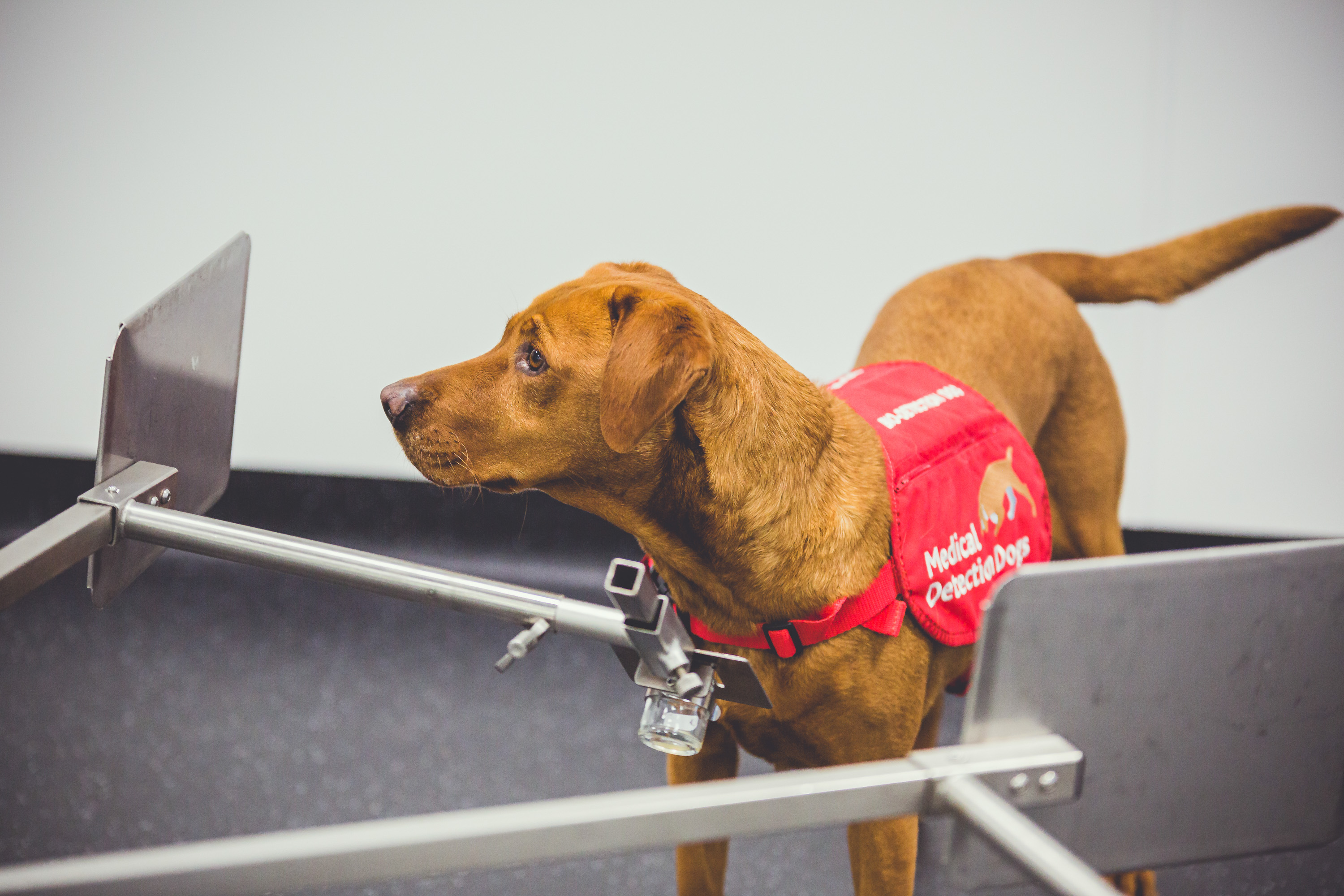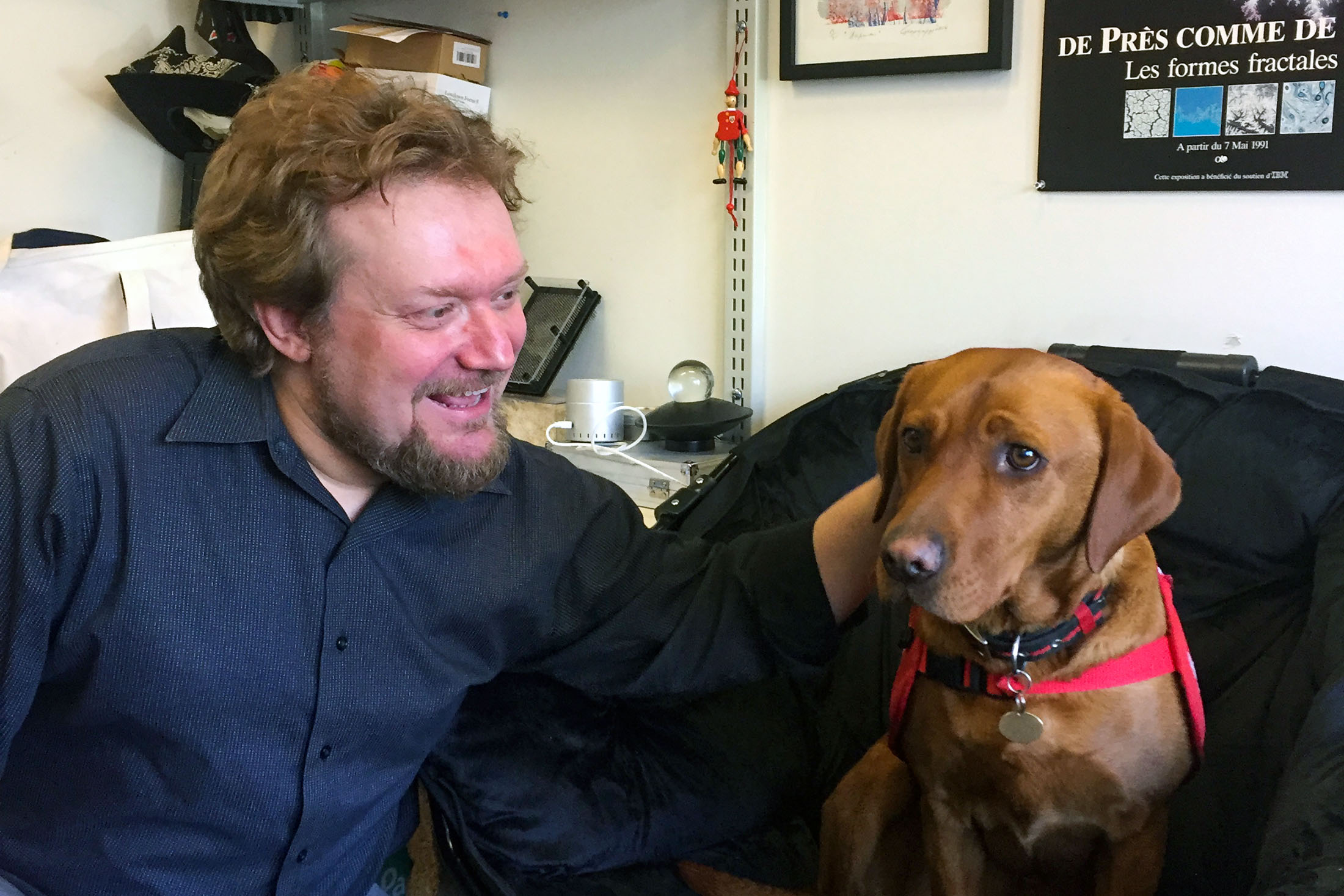The nose knows
It’s hard to beat a cancer-sniffing dog, but pairing a miniaturized detector with machine learning is a promising way to reproduce its capabilities.

Dogs trained to sniff out certain telltale scents in urine are among the best cancer detectors known to science. Researchers at MIT and elsewhere are working to duplicate their remarkable abilities in technology that, while less cuddly, would be far easier to use on a large scale.
“Dogs, for 15 years or so, have been shown to be the earliest, most accurate disease detectors for anything that we’ve ever tried,” says MIT research scientist Andreas Mershin, a coauthor of a new paper on this work. “So far, many different types of cancer have been detected earlier by dogs than any other technology.”
Dogs have detected lung, bladder, ovarian, breast, and prostate cancers—and they’ve even been able to detect covid-19. What’s more, some dogs trained to respond to samples from patients with one type of cancer have then identified several others, even when the similarities between the samples weren’t evident to humans.
Over the last few years, Mershin and the team have been working on a miniaturized detector system that incorporates mammalian olfactory receptors stabilized to act as sensors, producing data that can be handled in real time with the computational capacity of a smartphone. The system, Mershin says, is actually far more sensitive than a dog’s nose in terms of detecting the presence of tiny traces of different molecules—but in terms of interpreting those molecules, “it’s 100% dumber.” So the researchers are using machine learning to try to find the elusive patterns that dogs can infer from the scent, but that humans haven’t been able to grasp from a chemical analysis.

“The dogs don’t know any chemistry,” Mershin says. “They don’t see a list of molecules appear in their head. When you smell a cup of coffee, you don’t see a list of names and concentrations—you feel an integrated sensation. That sensation of scent character is what the dogs can mine.”
In the latest tests, the team tested 50 samples of urine from confirmed cases of prostate cancer and controls known to be free of the disease, and the machine-learning program teased out any similarities and differences between the samples that could help the sensor-based system identify the disease. Both the artificial system and the dogs achieved accuracy rates above 70%.
“We knew that the sensors are already better than what the dogs can do in terms of the limit of detection, but what we haven’t shown before is that we can train an artificial intelligence to mimic the dogs,” he says. “And now we’ve shown that we can do this. We’ve shown that what the dog does can be replicated to a certain extent.”
He envisions a day when phones are routinely equipped with scent detectors that could pick up early signs of disease far sooner than typical screens—and could even warn of smoke or a gas leak as well.
Keep Reading
Most Popular
Large language models can do jaw-dropping things. But nobody knows exactly why.
And that's a problem. Figuring it out is one of the biggest scientific puzzles of our time and a crucial step towards controlling more powerful future models.
The problem with plug-in hybrids? Their drivers.
Plug-in hybrids are often sold as a transition to EVs, but new data from Europe shows we’re still underestimating the emissions they produce.
Google DeepMind’s new generative model makes Super Mario–like games from scratch
Genie learns how to control games by watching hours and hours of video. It could help train next-gen robots too.
How scientists traced a mysterious covid case back to six toilets
When wastewater surveillance turns into a hunt for a single infected individual, the ethics get tricky.
Stay connected
Get the latest updates from
MIT Technology Review
Discover special offers, top stories, upcoming events, and more.